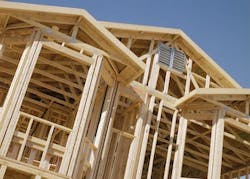2012 home building outlook: Builders largely optimistic about growth
Nearly six years removed from the start of the housing bubble burst, the home-building industry remains largely bruised and battered from the aftereffects — including steep home-price declines, an influx of foreclosures and short sales, dried-up project financing, a shaky mortgage market, and, more recently, political debate in Washington about the viability of a key underpinning of the U.S. housing market: the mortgage-interested deduction.
No other U.S. industry has been impacted as negatively by the Great Recession than the construction sector, and home building has taken the brunt of the force. Of the 1.98 million construction jobs lost since the beginning of 2006, the residential construction sector has accounted for more than 70 percent of them. Furthermore, heading into 2012, housing starts are off 69 percent since the market peak in 2005 and average U.S. home prices continue to hover at mid-2003 levels.
Yet, despite the obstacles and challenges that remain, a large number of builders are feeling optimistic about their prospects for 2012, and for valid reasons. While the road to a housing recovery has been a bumpy one, several key market metrics, including housing starts, have steadily trended higher during the past 12 to 18 months. Mortgage interest rates are at historic lows, and the surge in demand for rental housing has caused rental rates to skyrocket, putting the average monthly mortgage payment in many markets on par with the typical rent payment.
Moreover, builders with financial resources have been able to take advantage of depressed land values and the distressed property market to snatch up assets for as low as a quarter on the dollar, allowing them to build and sell homes at prices that compete with (and even beat) foreclosures and short sales. Many builders have also successfully diversified into other areas of construction, including remodeling, light commercial, and multi-family.
These are some of the key growth factors cited by the 525 home builders that responded to Professional Builder’s 2012 Market Outlook Survey. More than four in 10 survey respondents (41.6 percent) said they anticipate higher revenue in 2012, while only about 22 percent expect revenue to drop — this coming off a year when only 21 percent of the builders had revenue growth and nearly half (48.1 percent) experienced a drop (Charts 1 and 2). Moreover, slightly more than a quarter of builders surveyed (27.4 percent) said they expect to build more homes in 2012 than in 2011, while 24 percent anticipate building fewer homes (Chart 4). The numbers aren’t shocking, but they are indicative of an industry that looks to finally be on the upswing — albewit a lethargic one.
When it comes to key growth opportunities for 2012, the largest number of respondents (36.8 percent) cited remodeling activities, followed by building energy-efficient homes (33.3 percent), diversifying their service offering (29.9 percent), focusing on upscale clientele (27.0 percent), and light-commercial work (25.3 percent) (Chart 9).
Lack of builder and buyer financing and the overall economy were cited as top business challenges heading into 2012. More than half of respondents (50.5 percent) said the ongoing recession will be a key business obstacle, while nearly a third (30.3 percent) said business banking will be a top challenge. Other key obstacles include soft home prices, government regulations, and competing with foreclosures (Chart 8).
